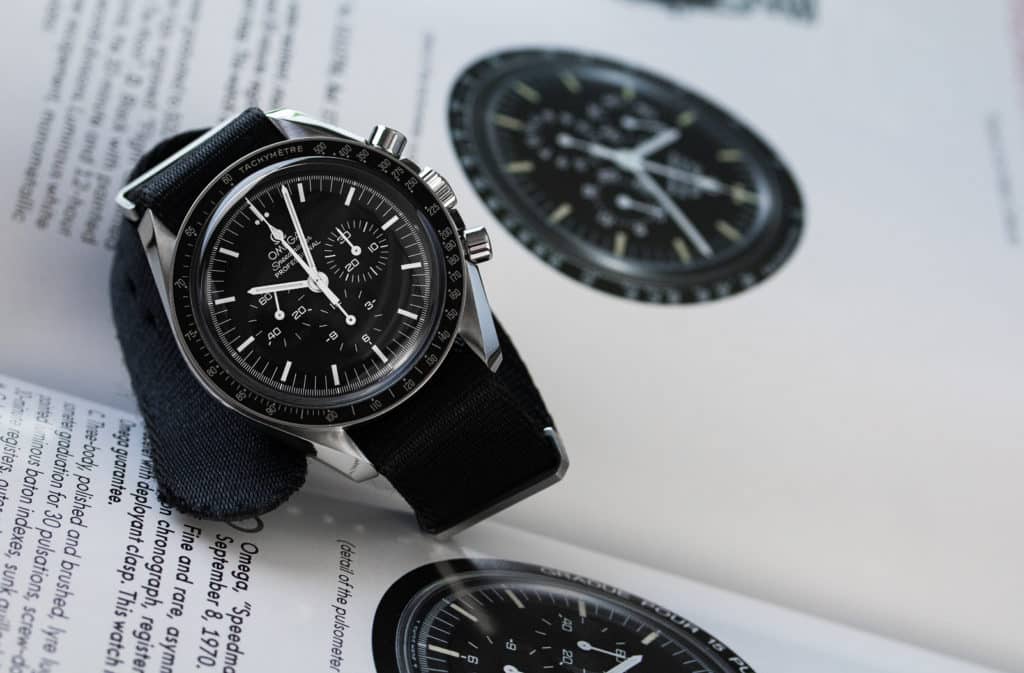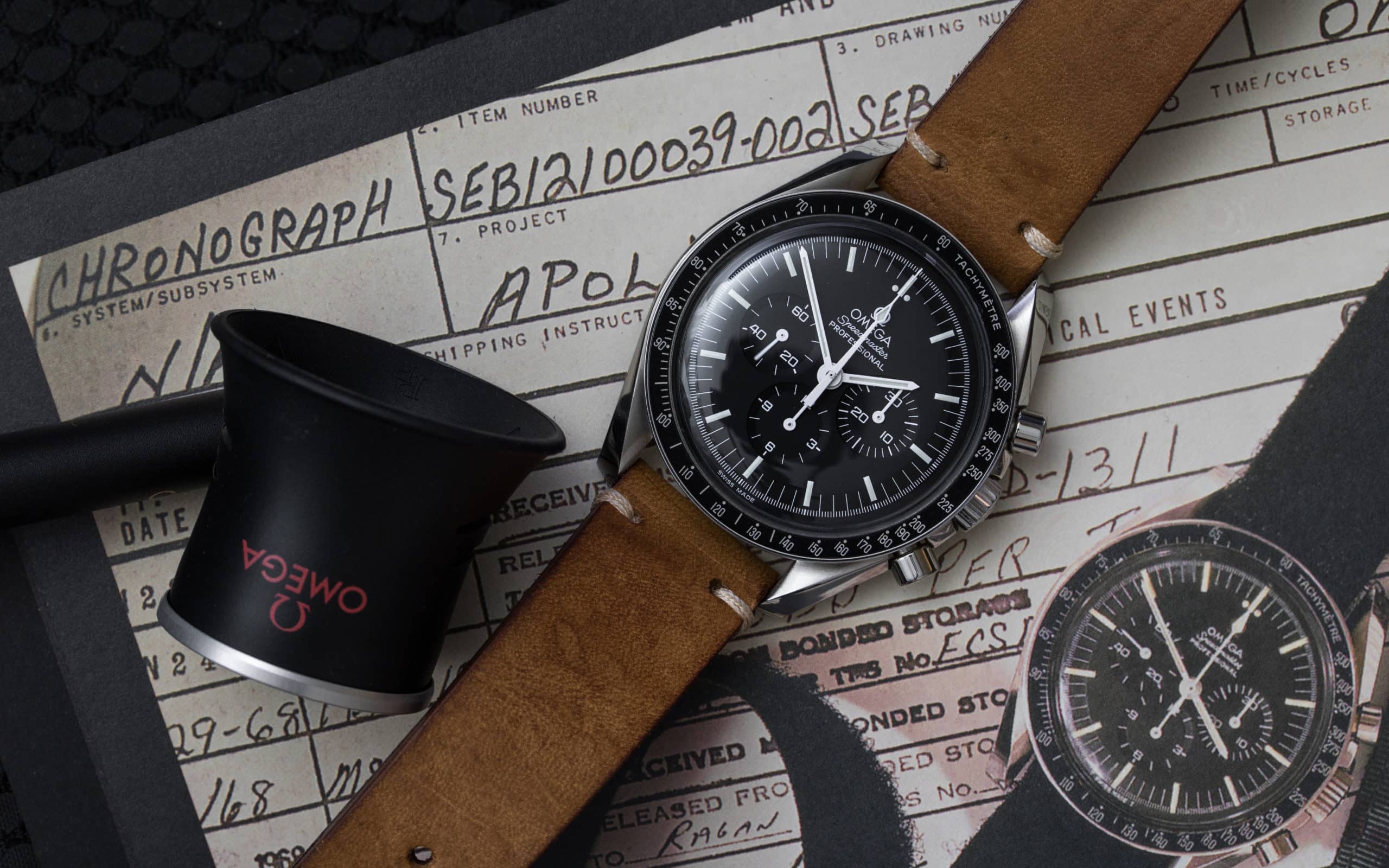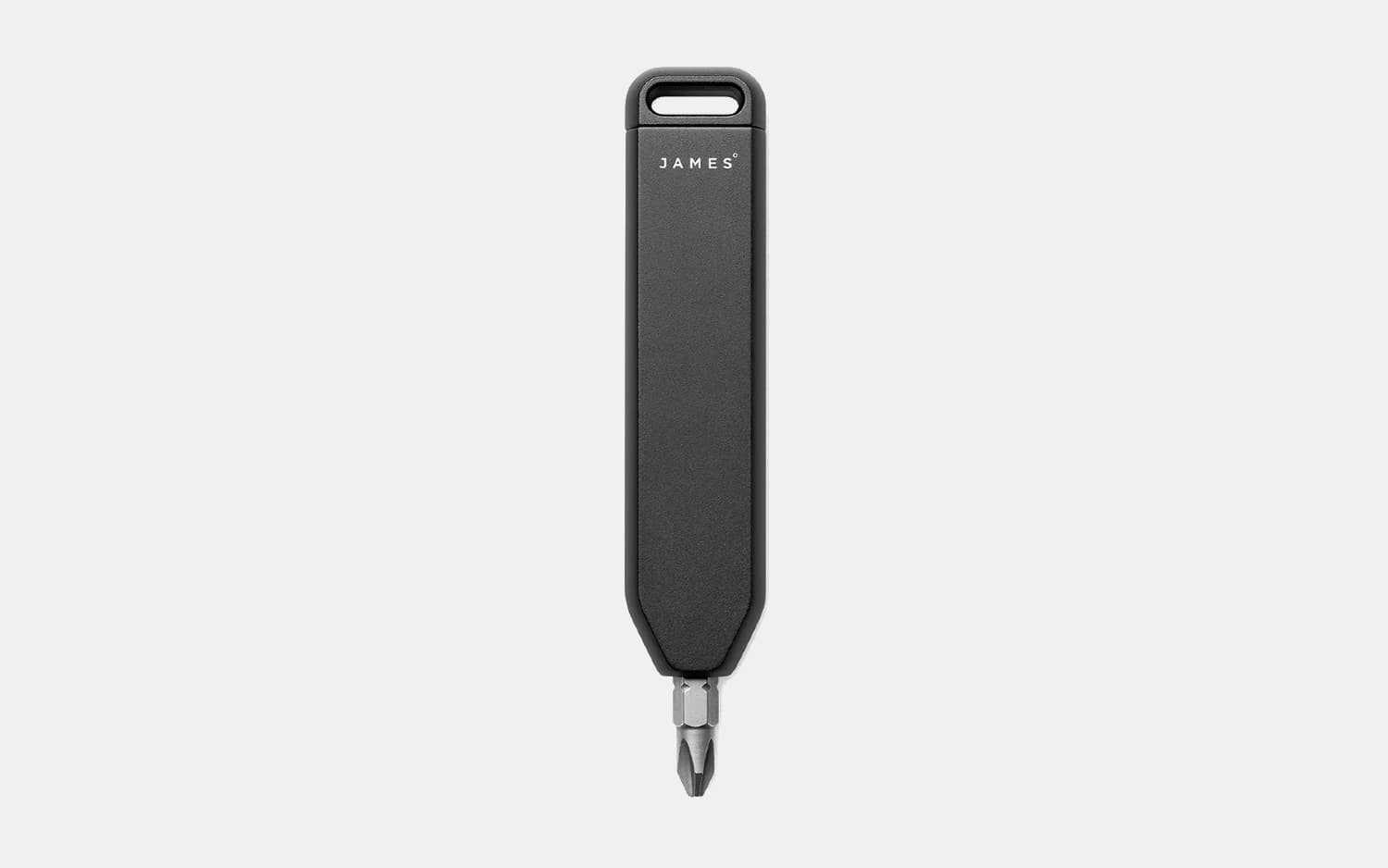Just as Dan Marino launched into the NFL stratosphere despite intentions in baseball, the Omega Speedmaster wasn’t originally intended for space travel. The Moonwatch, as we now know it, was originally a racing watch. The legendary timepiece then took an alternative path, and the rest, as they say, is history.
The history of the Omega Speedmaster begins in 1957. It debuted alongside its brothers, the Railmaster and the Seamaster 300, to instant acclaim. It’s debatably the first chronograph to go mainstream. Even in contemporary history, Sotheby’s auctioned off over a hundred Speedmasters in 2020 alone, rivaling the Rolex Submariner’s market presence.
Racing and Sporting Beginnings
In the 1930s, Omega became the official timekeeper for the Olympics. The Speedy’s ancestor chronographs were used as stopwatches at the games, so it’s no surprise that the Speedmaster took up the role of “sporting watch” within Omega’s professional watch trifecta. The Seamaster 300 was for the oceans, the Railmaster was for the railroads, and the Speedy was for the racetracks.

Belgian Formula One legend, Willy Mairesse, won plenty of races while sporting a Speedy. Former Ferrari chairman, Luca Cordero di Montezemolo, was known to don a Speedmaster Mark II during his years managing Ferrari’s F1 team, the Scuderia, in the ‘70s.
Tried and True Design
Like most horological legends, the original 1957 Speedmaster’s design language hasn’t changed much. We have the same three subdial layout, skinny, high-contrast indices, and the ubiquitous tachymeter scale bezel. The tachymeter was a common practice in earlier Seamaster lines, of which the Speedmaster was originally a sub-line of.
This forefather Speedmaster, reference number CK 2915, boasts excellent genes. It’s designed by Swiss talent, Claud Baillod, and it features the Omega caliber 321, a highly sought-after movement fashioned by the legendary Albert Piguet — more on Omega calibers later though. This watch was dubbed the “Broad Arrow” because of its generously-sized hands and the large arrow at the hour’s tip. Even today, the original Speedmaster is considered the gold standard for chronograph balance and proportions.
Prior to the Speedmaster wristwatch, chronographs were mainly used for battle artillery and aviation machinery. Omega was one of the first watchmakers to put the multi-subdial stopwatch concept onto the wrists of regular everyday men.
Battle for Space
On June 1st, 1965, NASA approved the Omega Speedmaster for spaceflight. It remains the only watch that’s NASA-qualified for extravehicular activity, which means it can be worn outside of earth’s appreciable atmosphere, even beyond a spacecraft.
NASA subjected several contending watches to qualification tests. The battle for space was fought among Longines, Breitling, Hamilton, and even the Rolex Cosmograph Daytona. With the exception of Hamilton who submitted a pocket watch (which was immediately disqualified), each challenger was a mechanical hand-wound chronograph.

NASA’s tests subjected the rival watches to extreme conditions including high and low pressure, shock, humidity, noise, vibration, and high and low temperature conditions in which watches were placed in 160-degree fahrenheit situations for two days followed by 30 minutes at 200 degrees, and 0-degree situations for four hours.
The tests ended on March 1st, 1965. Like the 2010s Patriots, reference 105.003 Speedy left its competitors in its moon-dust, surviving every test while remaining within five seconds of accuracy per day.
James Ragan, the engineer overseeing the qualification tests, considered the Speedmaster to be an important back-up tool. In the event that astronauts lose ground communication or in the face of a digital timer malfunction, they could rely on the Speedy. “It would be there for them if they had a problem,” he said. This statement would end up being truest for Apollo 13.
Houston, We Have a Chronograph
Fun fact: even before its qualification, the Omega Speedmaster went to space. Astronaut Walter Schirra wore a Speedy during 1962’s Sigma 7 mission.
John Young and Gus Grissom then wore the NASA-qualified Speedmasters during the Gemini 3 mission in 1965. That same year, Speedy did its first space walk on the wrist of Ed White during the Gemini 4 mission. He secured it around his space suit with nylon and velcro. Buzz Aldrin wore an Omega on the moon on that fateful American day in 1969.
I always say that if not for the Speedmaster, the Apollo 13 scare would be the Apollo 13 tragedy. When the spacecraft’s oxygen tank exploded, the crew needed to get back to earth. To do this, the ship’s engines had to be burned for a hyper precise amount of time in order to survive hitting the earth’s atmosphere. Astronaut Jack Swigert successfully timed the burn using his Speedmaster. Speedy truly proved his tool watch capabilities here, earning Omega NASA’s award for outstanding achievements in flight safety and mission success.
And of course, Tom Hanks accurately rocks a Speedy in the 1995 Apollo 13 docudrama, cinching the watch’s pop culture status on top of its historical importance.
The Speedmaster’s Legacy
Because of its popularity, the Speedmaster has more spin-offs than Star Trek. For the 60th anniversary of Omega’s 1957 professional watches, the original Seamaster 300, Railmaster, and Speedmaster were reissued as Trilogy limited editions. Another notable Speedy model is the Speedmaster Reduced, named so because of its 38mm case. It was produced between 1988 and 2009 and featured an automatic movement.

Regardless of model or caliber, mechanical Speedmasters are made with a Swiss movement so complex, that each timepiece is a horological triumph. Contemporary models are updated with an 1863 caliber, along with scratch-resistant sapphire crystals and 42mm cases. 1863 is a variant of the Piguet-designed 861 caliber, which is the movement that the first Moonwatches ran on. Most of the watches on the Apollo missions ran on Omega’s 321 caliber though, which is rarer, features decreased beat rates, and is highly desired by collectors.
Finally, it should be noted that as of today, Omega’s Moonwatch has been on every NASA lunar mission since 1969.
Buy An Omega Speedmaster
Disclosure: Clicking on these links and making a purchase may earn us a small referral fee, at no extra cost to you. Learn more here.


